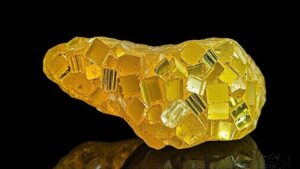Searching for rare meteorite fragments in the desert plains of the Lordsburg area.
Searching for Rare Meteorite Fragments in the Desert Plains of the Lordsburg Area
The Lordsburg area, located in the southwestern corner of New Mexico, is renowned among rockhounds and mineral collectors for its unique geological features and the potential for discovering rare meteorite fragments. This region, characterized by expansive desert plains and rugged mountains, offers a fascinating backdrop for amateur and professional meteorite hunters alike. With each hunt, collectors not only seek the thrill of discovery but also the chance to uncover pieces of the universe that have traveled millions of years through space.
The Science of Meteorites
Meteorites are classified into various categories based on their composition and origin. most common types include:
- Stony Meteorites: Comprising about 94% of all meteorites, these are primarily made of silicate minerals.
- Iron Meteorites: Formed mostly of metallic iron and nickel, these account for roughly 5% of meteorites.
- Stony-Iron Meteorites: A rare combination of metal and silicate minerals, making up about 1% of meteorite falls.
A majority of meteorites originate from the asteroid belt between Mars and Jupiter, having been ejected from their parent bodies due to collisions. The survival of these fragments through the Earths atmosphere is a remarkable process, as only those with robust structures can emerge relatively intact on the ground.
Lordsburg Area: Geological Significance
The Lordsburg area is geologically interesting due to its arid climate, which favors preservation. This region features a combination of alluvial plains and volcanic outcrops, providing two different types of terrains where meteorites may be found. Notably, local geological formations include:
- The Peloncillo Mountains: These mountains offer unique exposures where meteorites may have been trapped in sedimentary layers.
- The Gila River Valley: This area often sees weathering and erosion, exposing potential hidden fragments.
According to the Meteoritical Society, since 2000, more than 200 meteorites have been discovered in New Mexico, with some of the most significant finds located in the Lordsburg area. This provides a compelling reason for rockhounds to explore its vast terrains.
Searching Techniques and Tips
When embarking on a meteorite hunting expedition, employing effective methods and strategies can significantly increase your chances of success. Here are several practical tips:
- Choose the Right Tools: Equip yourself with a metal detector, a magnet, and geological tools such as hammers and chisels. Metal detectors are particularly useful for locating iron meteorites, as their significant nickel and iron content makes them detectable.
- Look for Distinct Markers: Meteorites often present unique characteristics, like fusion crusts–a shiny, dark exterior formed as they burn upon entering the atmosphere. Also, many meteorites are identified by their density and weight.
- Aim for Fresh Fall Locations: Recent meteorite falls or areas with minimal ground cover are ideal for searches, as weathering processes might expose buried fragments.
- Check the Weather: Clear skies and low humidity are optimal for visibility, allowing for better spotting of darker meteorite stones against lighter desert sands.
Real-World Applications of Meteorite Collecting
The search for meteorites is not limited to mere collecting; it has profound implications in various fields. For example, meteorites provide insights into the early solar system, helping scientists understand planetary formation and cosmic history. also contribute to advancing materials science, as researchers study the unique compositions of these fragments to develop new technologies.
Also, the field of astrobiology benefits from meteorite research, focusing on life’s potential origins beyond Earth. The discovery of organic compounds in meteorites has fueled ongoing discussions about extraterrestrial life possibilities.
Conclusion and Takeaways
Locating rare meteorite fragments in the Lordsburg area is an exhilarating endeavor for rockhounds and mineral collectors alike. By understanding the scientific significance of meteorites, utilizing effective searching techniques, and recognizing the broader implications of meteorite research, amateur collectors can immerse themselves in an engaging and impactful pursuit.
In summary, the Lordsburg area presents an extraordinary landscape for those eager to delve into the mysteries of meteorites:
- Equipping yourself with the right tools enhances your chances of success.
- Keen observation and knowledge of geological features lead to fruitful discoveries.
- Understanding the implications of meteorite data offers a deeper appreciation for these rare fragments.
With diligence, curiosity, and patience, your next expedition in the Lordsburg area could yield an extraordinary piece of the cosmos.



